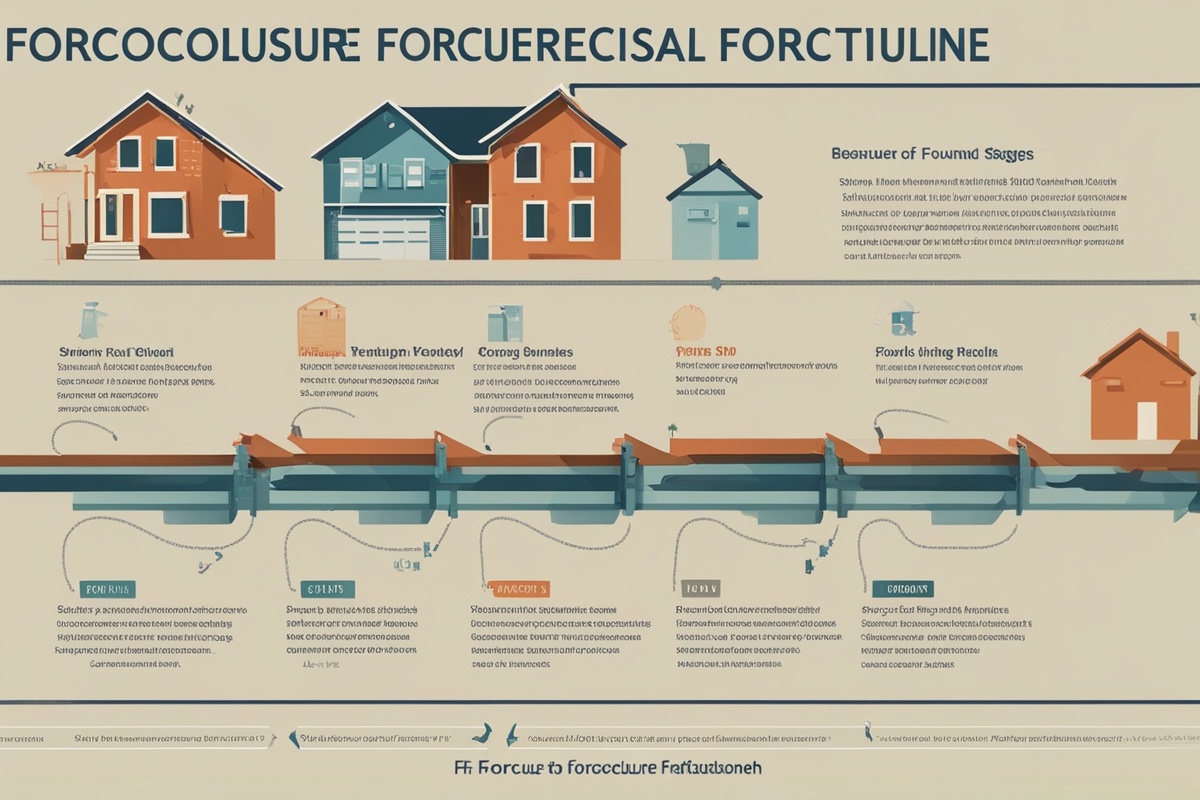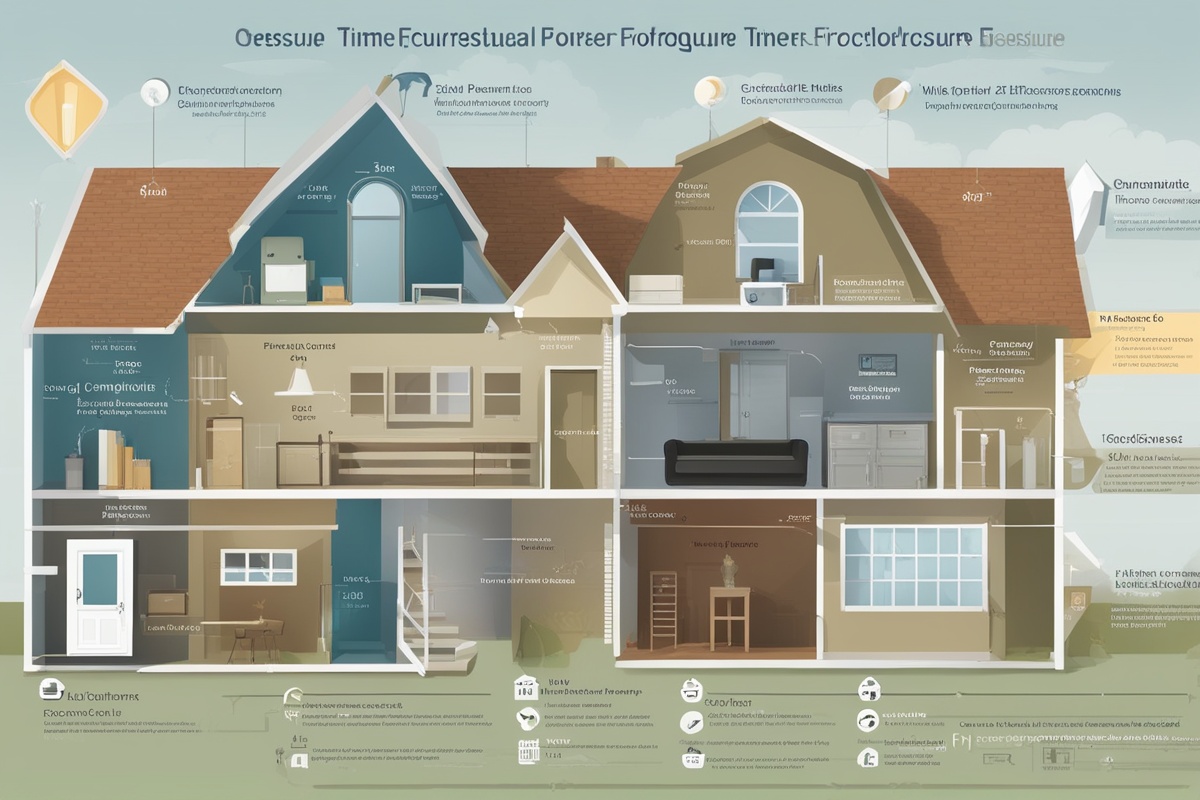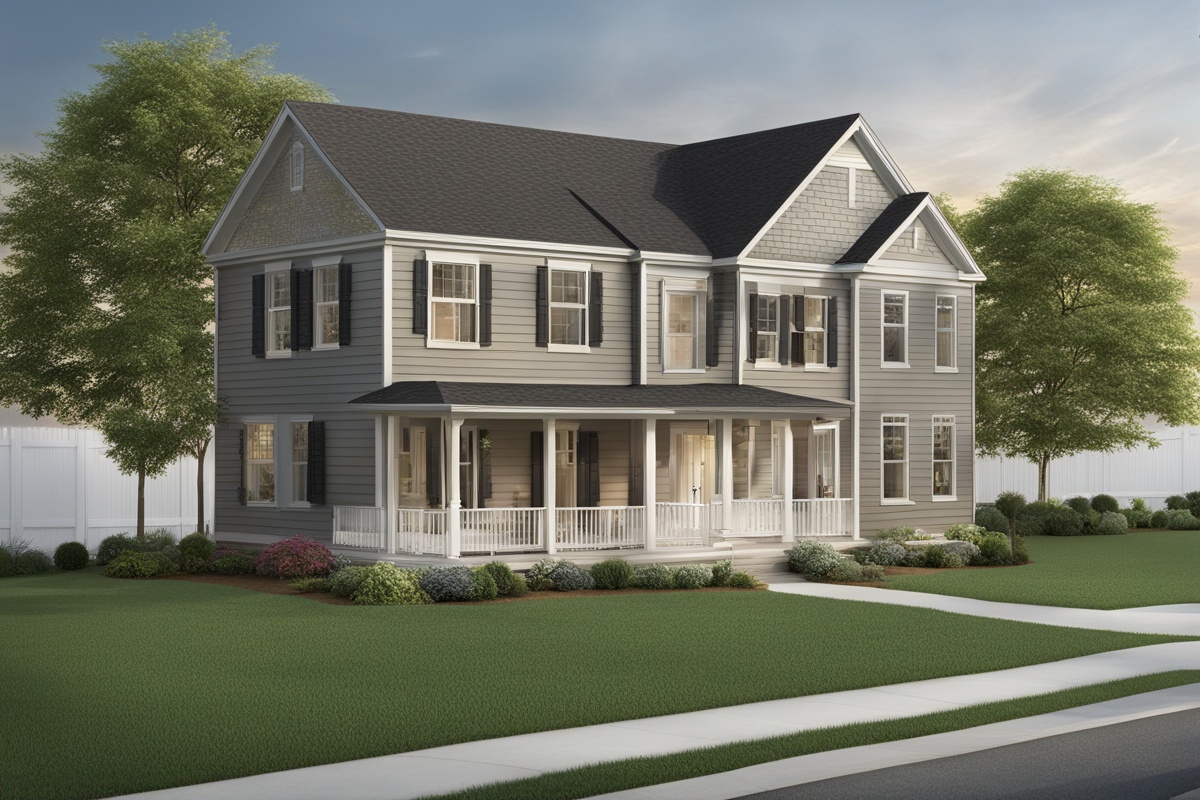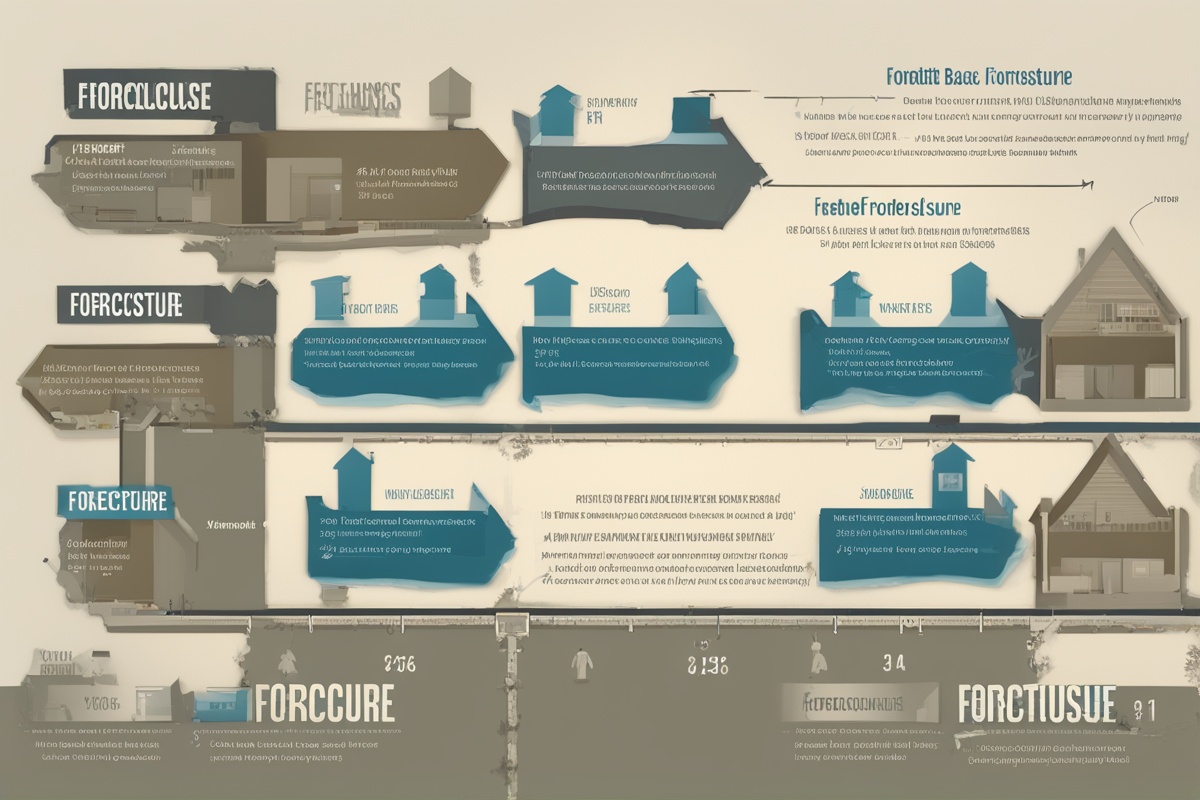For homeowners facing the daunting prospect of losing their property, understanding the foreclosure process is crucial. This Detailed Foreclosure Stage Duration Guide offers a comprehensive look at the various stages involved and how long each phase typically lasts. Whether you’re trying to prepare for what lies ahead or seeking ways to mitigate the process, having a clear grasp of the timeline can empower you to make informed decisions. Let’s dive into the critical phases and durations that define this challenging journey [1].
Key Stages of the Foreclosure Process
The foreclosure process is a legal mechanism through which lenders reclaim a property when a homeowner defaults on mortgage payments. It unfolds in several distinct stages, each with specific actions and implications. Understanding these stages is the first step in navigating the process effectively. The journey typically begins with missed payments, leading to formal notices, and can culminate in the loss of the home if unresolved issues persist. Here’s a breakdown of the key stages:
- Missed Payments: The process starts when a homeowner misses one or more mortgage payments, typically triggering a grace period of 15-30 days before late fees are applied.
- Notice of Default: After about 90 days of missed payments, the lender issues a formal notice, signaling the start of legal proceedings if the debt isn’t settled.
- Pre-Foreclosure Period: This phase allows homeowners a chance to rectify the situation through payment plans or loan modifications.
- Foreclosure Sale or Auction: If unresolved, the property is sold at a public auction to recover the lender’s losses.
- Eviction: Post-sale, if the homeowner hasn’t vacated, an eviction process may be initiated to reclaim possession.
For more insights into the foundational aspects of this process, check out Foreclosure Basics: Essential Tips for Homeowners [2].
How Long Each Foreclosure Phase Lasts
One of the most pressing questions homeowners ask is, “How long does each stage of foreclosure take?” The answer varies widely based on state laws, the lender’s policies, and whether the foreclosure is judicial or non-judicial. In a judicial foreclosure, which requires court involvement, the process can take anywhere from 6 months to over a year. Non-judicial foreclosures, handled outside of court, may be quicker, often concluding in 3-6 months. Here’s a general estimate of durations for each phase as outlined in the Detailed Foreclosure Stage Duration Guide:
Missed payments often go unnoticed by lenders for the first 30-60 days, but late fees accrue. The notice of default typically comes after 90 days of delinquency. Pre-foreclosure can last 30-120 days, depending on negotiations with the lender. The auction phase might take another 30-60 days to organize, while eviction timelines depend on local regulations, often spanning 14-30 days post-sale. These durations are averages and can be influenced by various factors, which we’ll explore further [3].
Breaking Down the Repossession Schedule
Understanding the repossession schedule within the foreclosure framework is essential for homeowners aiming to anticipate critical deadlines. The schedule begins the moment a payment is missed, but formal repossession actions don’t start until the notice of default is issued. This notice marks the lender’s intent to reclaim the property if the debt isn’t paid. From there, the schedule includes a pre-foreclosure window where homeowners might negotiate alternatives like short sales or deed-in-lieu agreements. If these fail, the lender sets a date for the auction, a pivotal moment in the timeline.
Imagine discovering that your home is scheduled for auction in just 30 days after months of missed payments. This scenario highlights the importance of staying proactive and informed about each step. For additional resources on navigating these stages, visit Understanding Foreclosure Basics: A Comprehensive Guide [4].
Duration of Property Seizure Steps
The steps involved in property seizure during foreclosure are often the most emotionally and financially taxing for homeowners. After the notice of default, the lender may file a lawsuit in judicial foreclosure states, which extends the duration due to court scheduling and legal proceedings. This step alone can take 3-6 months. In non-judicial states, the lender follows a predefined statutory timeline, often shorter, averaging 2-3 months from notice to auction.
Post-auction, if the property is sold, the new owner or lender will initiate eviction if the homeowner hasn’t vacated. This step’s duration varies by local laws—some states allow a redemption period post-sale (ranging from 10 days to a year) during which the homeowner can reclaim the property by paying the full debt. Keeping track of these timelines is crucial, and resources like Foreclosure Basics: Key Steps to Protect Your Home can provide further guidance [5].
Timeline of Home Loss Proceedings
The timeline of home loss proceedings encapsulates the entire journey from the first missed payment to the final eviction or property transfer. A common question is, “What is the Detailed Foreclosure Stage Duration Guide, and how can it help me?” Simply put, it’s a roadmap that details each phase’s expected duration, helping homeowners plan their next steps, whether that’s catching up on payments, seeking legal advice, or preparing for relocation. On average, the full process spans 3-12 months, but this can stretch significantly in judicial foreclosure states or if legal challenges arise.
During this timeline, communication with the lender is vital. Many homeowners are unaware of options like forbearance or loan modification until it’s too late. Staying informed about each proceeding’s duration can provide the breathing room needed to explore these alternatives and potentially save your home [1].
Understanding Foreclosure Delays
Delays in the foreclosure process are not uncommon and can significantly alter the expected timeline. These delays might stem from legal challenges, such as a homeowner filing for bankruptcy, which can halt proceedings temporarily through an automatic stay. State-specific moratoriums or federal interventions, especially during economic crises, can also pause foreclosures for months. Additionally, incomplete paperwork or errors by the lender can lead to delays, sometimes giving homeowners extra time to negotiate or catch up on payments.
Here are some common causes of delays in the foreclosure process:
- Bankruptcy Filing: Filing for Chapter 13 bankruptcy can stop foreclosure for several months while a repayment plan is structured.
- Legal Disputes: Contesting the foreclosure in court can extend the process by 6-12 months, depending on the case complexity.
- Government Programs: Temporary relief programs may delay proceedings, offering homeowners a chance to apply for assistance [6].
This content is for informational purposes only.
References
- [1] Study on Detailed Foreclosure Stage Duration Guide, 2023
- [2] Article on Foreclosure Process Basics, 2022
- [3] Guide to Foreclosure Timelines by State, 2024
- [4] Insights on Repossession Schedules, 2023
- [5] Report on Property Seizure Durations, 2022
- [6] Analysis of Foreclosure Delays and Legal Challenges, 2024





